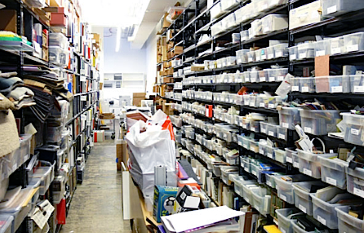
While working on a physical project, there’s a need to design parts, as chassis, parts of mechanisms, covers – and many more, even that there is an easy option to use pre-modeled parts as mentioned in my previous article (and in more to come). whether you use 3D CAD software such as Solidworks, Creo, Fusion360, inventor or even doing it the old way with pencil and paper, there comes a time to choose the right material to meet the requirements from the part.There are few practical steps in the material selection process, and in this article they will be based on a design case for a heat sink design. the article will show how using the web resources can ease the process and make it quick and productive.
The steps
The steps for selecting material will be as follows:
- Selecting the right material
- Finding a general purpose supplier, to learn what are the practical forms that this material can be supplied
- Finding a specialty supplier that may have the material in more suitable form for the requirements.
These steps are quite similar whether its a metal for crane chassis or cloth for new sport shoe design.
Note – The suppliers in this article are ones that I use, but there are many more that serve the exact goal general/specialty supplier.
Since our design case is heat sink (Passive heat exchanger that transfers the heat generated by an electronic or a mechanical device to a fluid medium) we will start our design process by looking for the the right material, we can search the literature or ask google “heat sink material” that will lead us through Wikipedia to find that aluminum is commonly used as heat sink material, and to be more specific Aluminium alloy 1050A.
Step 1: Material selection using “Matweb” website
In order to learn some more about the material proposed in Wikipedia, Browsing to Matweb is very useful, MatWeb’s searchable database of material properties includes data sheets of polymers, metals, ceramics, and other engineering materials. results for Aluminum 6063 give us additional information about the different variations for this material and other important properties. Now, we have the material properties, but we need to find actual material that we can use, so the next step is materials supplier.
![]()
Step 2: Finding how the selected material is supplied using Scope website
Scope is a material supplier, I use often but there are many local suppliers, they all work by the same scheme – big stock and good website, you buy the amount from them or from their sub-suppliers (for small amounts), for our case Aluminum 6063 comes in various sizes so we can mill it and shape it to the exact heat sink we need, BUT maybe we can make it easier and faster ?!

Step 3: Searching for a specialty supplier for solutions using BTI-2XL website
Since heat sink is a known solution, and commonly used, maybe there is a supplier that sells pre-made units or profiles ? short search lead to BTI-2XL, small specialty supplier, and browsing in their site shows they have the exact heat sink that match the needs.
Summary
Choosing the right material for the designed part is a major step in the design process, in this article it was shown how to use the internet to find the right material that will answer the need, understanding that there are material suppliers (based on the supply area) and a big time saver and design aid is a material specialty supplier, which can shorten the supply and design time with pre-made supplies.
The principal for material selection can be used to all material selection – the suppliers and sites may change but the working principle stays the same, nevertheless that are some times that a special material is required and a unique processing is applied, but this is a minority of the cases, unfortunately 😉

One reply on “Selecting the right material for a design – hands on manual”
So simple, yet I experienced in so many cases that designers “re-invent” and costume design basic of the shelf parts.
This is a must lesson for junior-high in the 21st century, that many graduates did not take yet.